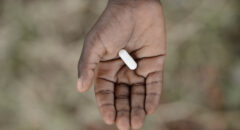 Want to make a simple, ten-second check on the state of your health? Take a look at what your feet are saying about your health.
Want to make a simple, ten-second check on the state of your health? Take a look at what your feet are saying about your health.
"You can detect everything from diabetes to nutritional deficiencies just by examining the feet," says Jane Andersen, DPM, president of the American Association of Women Podiatrists and a spokeswoman for the American Podiatric Medical Association.
Together, your feet contain a quarter of the body's bones, and each foot also has 33 joints; 100 tendons, muscles, and ligaments; and countless nerves and blood vessels that link all the way to the heart, spine, and brain.
So when the feet send you one of these 12 warning signs, you should listen:
1. Toenails with slightly sunken, spoon-shaped indentations
What it means: Anemia (iron deficiency) often shows up as an unnatural, concave or spoonlike shape to the toes' nail beds, especially in moderate-to-severe cases. It's caused by not having enough hemoglobin, an iron-rich protein in the blood cells that transports oxygen. Internal bleeding (such as an ulcer) or heavy menstrual periods can trigger anemia.
More clues: On fingers as well as toes, the skin and nail beds both appear pale. The nails may also be brittle, and feet may feel cold. Fatigue is the number-one sign of anemia, as are shortness of breath, dizziness when standing, and headache.
What to do: A complete blood count is usually used to diagnose anemia. A physical exam may pinpoint a cause. First-step treatments include iron supplements and dietary changes to add iron and vitamin C (which speeds iron absorption).
2. Sudden hair loss on feet or toes
What it means: Poor circulation, usually caused by vascular disease, can make hair disappear from the feet. When the heart loses the ability to pump enough blood to the extremities because of arteriosclerosis (commonly known as hardening of the arteries), the body has to prioritize its use. Hairy toes are, well, low on the totem pole.
More clues: The reduced blood supply also makes it hard to feel a pulse in the feet. (Check the top of the foot or the inside of the ankle.) When you stand, your feet may be bright red or dusky; when elevated, they immediately pale. The skin is shiny. People with poor circulation tend to already know they have a cardiovascular condition (such as heart disease or a carotid artery) yet may not realize they have circulation trouble.
What to do: Treating the underlying vascular issues can improve circulation. Toe hair seldom returns, but nobody complains much.
3. A sore that won't heal on the bottom of the foot
What it means: This is a major clue to diabetes. Elevated blood glucose levels lead to nerve damage in the feet -- which means that minor scrapes, cuts, or irritations caused by pressure or friction often go unnoticed, especially by someone who's unaware he has the disease. Untreated, these ulcers can lead to infection, even amputation.
More clues: Oozing, foul-smelling cuts are especially suspect because they've probably been there awhile. Other symptoms of diabetes include persistent thirst, frequent urination, increased fatigue, blurry vision, extreme hunger, and weight loss.
What to do: Get the ulcer treated immediately and see a doctor for a diabetes evaluation. Diabetics need to inspect their feet daily (older people or the obese should have someone do this for them) and see a healthcare professional every three months.
4. Cold feet
What it means: Women, especially, report cold feet (or more precisely, their bedmates complain about them). It may be nothing -- or it may indicate a thyroid issue. Women over 40 who have cold feet often have an underfunctioning thyroid, the gland that regulates temperature and metabolism. Poor circulation (in either gender) is another possible cause.
More clues: Hypothyroidism's symptoms are pretty subtle and appear in many disorders (fatigue, depression, weight gain, dry skin).
What to do: Insulating layers of natural materials work best for warmth. (Think wool socks and lined boots). If you also have other nagging health complaints, mention the cold feet to your doctor. Unfortunately, however, aside from treatment with medication in the event of a thyroid condition, this tends to be a symptom that's neither easily nor sexily resolved.
5. Thick, yellow, ugly toenails
What it means: A fungal infection is running rampant below the surface of the nail. Onychomycosis can persist painlessly for years. By the time it's visibly unattractive, the infection is advanced and can spread to all toenails and even fingernails.
More clues: The nails may also smell bad and turn dark. People most vulnerable: those with diabetes, circulatory trouble, or immune-deficiency disorders (like rheumatoid arthritis). If an older person has trouble walking, sometimes the problem can be traced to the simple fact that as infected nails grow thicker, they're harder to cut and simply go ignored to the point of pain.
What to do: See a foot specialist or your regular physician for care and treatment. In serious cases, over-the-counter antifungals are usually not as effective as a combination of topical and oral medications and the professional removal of diseased bits. Newer-generation oral antifungal medications tend to have fewer side effects than older ones.
6. Numbness in both feet
What it means: Being unable to "feel" your feet or having a heavy pins-and-needles sensation is a hallmark of peripheral neuropathy, or damage to the peripheral nervous system. That's the body's way of transmitting information from the brain and spinal cord to the entire rest of the body. Peripheral neuropathy has many causes, but the top two are diabetes and alcohol abuse (current or past). Chemotherapy is another common cause.
More clues: The tingling or burning can also appear in hands and may gradually spread up to arms and legs. The reduced sensation may make it feel like you're constantly wearing heavy socks or gloves.
What to do: See a physician to try to pinpoint the cause (especially if alcohol addiction doesn't apply). There's no cure for peripheral neuropathy, but medications from pain relievers to antidepressants can treat symptoms.
7. Sore toe joints
What it means: Rheumatoid arthritis (RA), a degenerative joint disease, is often first felt in the smaller joints, such as the toes and the knuckles of the hands.
More clues: Swelling and stiffness usually accompany the aches. This pain tends to be symmetrical; for example, it happens simultaneously in both big toes or in both index fingers. RA develops more suddenly than degenerative arthritis, and attacks may come and go. Women are almost four times more affected than men.
What to do: A full workup is always needed to pinpoint the cause of any joint pain. For RA, there are many medications and therapies that can minimize pain and preserve function, though early diagnosis is important to avoid permanent deformity. (In the feet, the toes can drift to the side.)
8. Red flag: Dry, flaky skin
What it means: Even if your face or hands tend to be powdery-dry, don't dismiss this skin condition on your feet. You don't have to be a jock to contract athlete's foot, a fungal infection that usually starts as dry, itchy skin that then progresses to inflammation and blisters. When blisters break, the infection spreads.
(The name comes from the moist places the fungus thrives -- places athletes tend to congregate, such as locker rooms and pools.)
More clues: Athlete's foot usually shows up between the toes first. It can spread to the soles and even to other parts of the body (like the underarms or groin), usually due to scratching.
What to do: Mild cases can be self-treated by bathing the feet often and drying them thoroughly. Then keep the feet dry, including using foot powder in shoes and socks. If there's no improvement in two weeks or the infection worsens, a doctor can prescribe topical or oral antifungal medication.
9. Feet that are really painful to walk on
What it means: Undiagnosed stress fractures are a common cause of foot pain. The discomfort can be felt along the sides of the feet, in the soles, or "all over." These fractures -- they often occur repeatedly -- may be caused by another underlying problem, often osteopenia (a decrease in optimum bone density, especially in women over age 50) or some kind of malnutrition, including a vitamin D deficiency, a problem absorbing calcium, or anorexia.
More clues: Often you can still walk on the broken bones; it just hurts like heck. (Some hardy people have gone undiagnosed for as long as a year.)
What to do: See a foot doctor about any pain. If, for example, you've been walking around Europe for three weeks in bad shoes, your feet may simply be sore. But a 55-year-old sedentary woman with painful feet may need a bone-density exam. An X-ray can also reveal possible nutritional issues that warrant a referral to a primary care provider.
10. Toes that bump upward at the tips
What it means: When the very tips of the toes swell to the point where they lose their usual angle and appear to bump upward at the ends, it's called "digital clubbing" or "Hippocratic clubbing" after Hippocrates, who described the phenomenon 2,000 years ago. It's a common sign of serious pulmonary (lung) disease, including pulmonary fibrosis and lung cancer. Heart disease and certain gastrointestinal diseases, such as Crohn's disease, are also associated with clubbing.
More clues: Fingers can be clubbed as well as toes. It can happen in just some digits, or in all.
What to do: Treatment depends on the underlying cause, so report this serious symptom to a doctor. (Physicians are also well trained to look for clubbed digits during exams.)
11. Shooting pain in the heel
What it means: Plantar fasciitis -- a fancy name for inflammation of a band of connective tissue (fascia) running along the bottom (plantar) of the foot -- is abnormal straining of the tissue beyond its normal extension.
More clues: The pain starts when you take your first steps in the morning and often intensifies as the day wears on. It's usually concentrated in the heel (one or both) but can also be felt in the arch or in the back of the foot. Running and jumping a lot can cause it, but so can insufficient support. You're at risk if you go barefoot a lot or wear old shoes or flimsy flip-flops, have gained weight, or walk a lot on hard surfaces.
What to do: If pain persists more than a few weeks or seems to worsen, have it evaluated by a podiatrist. Stick to low shoes with a strong supportive arch until you get further advice and treatment (which may include anti-inflammatory drugs and shoe inserts).
12. "Phee-uuuuw!"
What it means: Though smelly feet (hyperhidrosis) tend to cause more alarm than most foot symptoms, odor -- even downright stinkiness -- is seldom a sign something's physically amiss. (Whew!) Feet contain more sweat glands than any other body part -- half a million between the two of them! And some people are more prone to sweat than others. Add in the casings of shoes and socks, and the normal bacteria that thrive in the body have a feast on the resulting moisture, creating the smell that makes wives and mothers weep. (Both sexes can have smelly feet, but men tend to sweat more.)
More clues: In this case, the one olfactory clue is plenty.
What to do: Wash with antibacterial soap and dry feet well. Rub cornstarch or antiperspirant onto soles. Toss used socks in the wash; always put on a fresh pair instead of reusing. Stick to natural materials (cotton socks, leather shoes) -- they wick away moisture better than man-made materials. Open up laced shoes after you remove them so they get a chance to fully air out; don't wear them again until they're fully dry.









